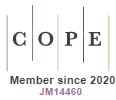A new approach using simulation of physical models with augmented reality to teach electrical engineering: a case study using electromagnetism
DOI:
https://doi.org/10.5585/50.2024.27417Palavras-chave:
electrical engineering education, physical model simulation, augmented reality, electromagnetismResumo
This study evaluates a new educational approach using augmented reality to simulate physical models, aiming to enhance perceived learning in electrical engineering. A literature review on augmented reality in education, particularly for electrical engineering, is conducted. An electromagnetism lecture on Coulomb’s Law, Electric Fields, and Electric Forces was delivered using this method to a class of 39 students. A pre/post-exposure questionnaire gauged changes in student perception, and the System Usability Score measures the mobile app’s usability. Results show improved student perception of learning outcomes. The study also offers future research directions and suggestions to improvement the proposed method.
Downloads
Referências
ALTMEYER, K. et al. The use of augmented reality to foster conceptual knowledge acquisition in STEM laboratory courses – Theoretical background and empirical results. British Journal of Educational Technology, v. 51, n. 3, p. 611–628, 2020. DOI: https://doi.org/10.1111/bjet.12900.
Disponível em: https://bera-journals.onlinelibrary.wiley.com/doi/epdf/10.1111/bjet.12900. Acesso em: 10 nov. 2023.
ALVAREZ-MARIN, A.; VELAZQUEZ-ITURBIDE, J. A. Augmented Reality and Engineering Education: A Systematic Review. IEEE Transactions On Learning Technologies, v. 14, n. 6, p. 817–831, 2021. DOI: https://doi.org/10.1109/tlt. 2022.3144356.
ÁLVAREZ-MARÍN, A.; VELÁZQUEZ-ITURBIDE, J. A.; CASTILLO-VERGARA, M. Technology Acceptance of an Interactive Augmented Reality App on Resistive Circuits for Engineering Students. Electronics, v. 10, n. 11, 2021a. DOI: 10.3390/electronics10111286. Disponível em: https://www.mdpi.com/2079-9292/10/11/1286. Acesso em: 7 fev. 2023.
ÁLVAREZ-MARÍN, A.; VELÁZQUEZ-ITURBIDE, J. A.; CASTILLO-VERGARA, M. The acceptance of augmented reality in engineering education: the role of technology optimism and technology innovativeness. Interactive Learning Environments, p. 1–13, 2021b. DOI: https://doi.org/10.1080/10494820.2021. 1928710. Disponível em: https://www.tandfonline.com/doi/pdf/10.1080/10494820.2021.1928710casa_token=VGW_NpQnmIQAAAAA:Jnle2u9v3DbupoHn6pTaYNbuL7Ns4xXuTmQeym8AJgmUAgYzgnL2Qr51pcGWiS52MApiKpGKUSHrzras0g. Acesso em: 4 abr. 2023
ANDERSON, L.W. et al. A Taxonomy for Learning, Teaching and Assessing: A Revision of Bloom’s Taxonomy of Educational Objectives. [S.l.]: New York: Longman, 2001.
AVILES-CRUZ, C.; VILLEGAS-CORTEZ, J. A smartphone-based augmented reality system for university students for learning digital electronics. Computer Applications In Engineering Education, v. 27, n. 3, p. 615–630, 2019. DOI: https://doi.org/10.1002/cae.22102.
BANGOR, A.; KORTUM, P.; MILLER, J. Determining What Individual SUS Scores Mean: Adding an Adjective Rating Scale. J. Usability Studies, Usability Professionals’ Association, Bloomingdale, IL, v. 4, n. 3, p. 114–123, May 2009.
BAZZO, W. A.; PEREIRA, L. T. V. Introdução à Engenharia: conceitos, ferramentas e comportamentos. Ed. da UFSC, 2006. [S.l.]: Editora da UFSC, 2006.
BLOOM, B. S. et al. Taxonomy of Educational Objectives: The Classification of Educational Goals. [S.l.]: New York: David McKay Company, 1956.
BRASIL. Resolução nº 2, de 24 de abril de 2019. Institui as Diretrizes Curriculares Nacionais do Curso de Graduação em Engenharia. Brasília, DF: Ministério da Educação- Conselho Nacional de Educação. Disponível em: https://normativasconselhos.mec.gov.br/normativa/view/CNE_RES_CNECESN22019.pdf. Acesso em: 20 out. 2024.
BROOKE, J. SUS: A quick and dirty usability scale. Usability Eval. Ind., v. 189, Nov. 1995.
CHU, Y. B. A mobile augmented reality system to conduct electrical machines laboratory for undergraduate engineering students during the COVID pandemic. Education and Information Technologies, 2022. DOI: https://doi.org/10.1007/s10639-022-10987-9.
ESTRADA, J. et al. Deep-Learning-Incorporated Augmented Reality Application for Engineering Lab Training. Applied Sciences, v. 12, n. 10, 2022. DOI: https://doi.org/10.3390/app12105159.
FARIDI, H. et al. A framework utilizing augmented reality to improve critical thinking ability and learning gain of the students in Physics. Computer Applications in Engineering Education, v. 29, n. 1, p. 258–273, 2021. DOI: https://doi.org/10.1002/cae.22342.
KAPP, S. et al. Smart Sensors for Augmented Electrical Experiments. Sensors, v. 22, n. 1, 2022. DOI: https://doi.org/10.3390/s22010256. Cit. on pp. 4, 13.
KAUR, D. P.; MANTRI, A.; HORAN, B. Design implications for adaptive augmented reality based interactive learning environment for improved concept comprehension in engineering paradigms. Interactive Learning Environments, v. 30, n. 4, p. 589–607, 2022. DOI: https://doi.org/10.1080/10494820.2019.1674885.
KUMAR, A.; MANTRI, A.; DUTTA, R. Development of an augmented reality-based scaffold to improve the learning experience of engineering students in embedded system course. Computer Applications in Engineering Education, v. 29, n. 1, p. 244–257, 2021. DOI: https://doi.org/10.1002/cae.22245.
MARTÍN-GUTIÉRREZ, J. et al. Augmented reality to promote collaborative and autonomous learning in higher education. Computers in Human Behavior, v. 51, p. 752–761, 2015. DOI: https://doi.org/10.1016/j.chb.2014.11.093.
MASSA, A. et al. Teaching Electromagnetics to Next-Generation Engineers—The ELEDIA Recipe: The ELEDIA teaching style. IEEE Antennas and Propagation Magazine, v. 62, n. 2, p. 50–61, 2020. DOI: https://doi.org/10.1109/ MAP.2020.2970307.
MILGRAM, P.; KISHINO, F. A Taxonomy of Mixed Reality Visual Displays. IEICE Transaction on Information and Systems, vol. E77-D, no. 12, p. 1321–1329, 1994.
MOTEJLEK, J.; ALPAY, E. Taxonomy of Virtual and Augmented Reality Applications in Education. IEEE Transactions on Learning Technologies, v. 14, n. 3, p. 415–429, 2021. DOI: https://doi.org/10.1109/tlt.2021.3092964.
NOGUEIRA, J. Robert; ALVES, Ricardo; MARQUES, P. Carmona. Computational Programming as a Tool in the Teaching of Electromagnetism in Engineering Courses: Improving the Notion of Field. Education Sciences, v. 9, 2019. DOI: https://doi.org/10.3390/educsci9010064. Disponível em: https://www.mdpi.com/2227-7102/9/1/64. Acesso em: 10 nov. 2023.
RAHMAN, H. Pedagogical Approach to Teaching a First Course in Engineering Electromagnetics. Interna- tional Journal for Innovation Education and Research, v. 2, p. 25–29, Mar. 2014. DOI: https://doi.org/10.31686/ijier.vol2.iss3.153.
ROSENBAUM, F.J. et al. Teaching electromagnetics around the world: a survey. IEEE Transactions on Education, v. 33, n. 1, p. 22–34, 1990. DOI: https://doi.org/10.1109/13.53624.
SANDOVAL, S. P. et al. On the Use of Augmented Reality to Reinforce the Learning of Power Electronics for Beginners. Electronics, v. 11, n. 3, 2022. DOI: https://doi.org/510.3390/electronics11030302. Disponível em: https://www.mdpi.com/2079-9292/11/3/302. Acesso em: 10 jun. 2023.
TIRADO-MORUETA, R. et al. Exploratory study of the acceptance of two individual practical classes with remote labs. European Journal of Engineering Education, v. 43, n. 2, p. 278–295, 2018. DOI: https://doi.org/10.1080/03043797. 2017.1363719.
VERGARA, D.; RUBIO, M. P.; LORENZO, M. On the Design of Virtual Reality Learning Environments in Engineering. Multimodal Technologies and Interaction, v. 1, n. 2, 2017. DOI: https://doi.org/10.3390/mti1020011.
YENER, Y.; HALIL, Y. Augmented reality application in engineering education: N-Type
MOSFET. The International Journal of Electrical Engineering & Education, p. 1–13, 2020. DOI: https://doi.org/10.1177/0020720920954150.
Downloads
Publicado
Como Citar
Edição
Secção
Licença
Direitos de Autor (c) 2024 Natan Menegasse, Cleber Dias

Este trabalho encontra-se publicado com a Licença Internacional Creative Commons Atribuição-NãoComercial-CompartilhaIgual 4.0.








